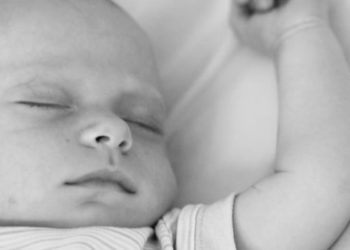Risk factors for sleep-related deaths may differ by age
1. In younger infants (0 to 3 months old), sleep-related deaths were more likely to be associated with bed sharing when compared to sleep-related deaths among older infants (4 months to 364 days old).
2. Older infants old who passed from sleep-related deaths were more likely to have been sleeping with objects in their sleeping environment and in the prone position when compared to younger infants.
Evidence Rating Level: 2 (Good)
Study Rundown: Sudden infant death syndrome (SIDS) is the third most common cause of death in infants and has known preventable risk factors. While previous studies have considered age-stratified risk of sleep-related deaths in the context of 1 risk factor, this study aimed to uncover the effect of multiple risk factors at different times in an infant’s development. Infant sleep-related deaths were analyzed for risk factors including sleep location, position, and surrounding objects. Infants were grouped by age into younger (0 to 3 months old) and older infant groups (4 months to 364 days old). Causes of sleep-related death were categorized as SIDS, accidental suffocation or unknown/undetermined. A secondary goal of this study included analyzing for age-stratified differences in this categorization. When compared to younger infants, older infants were significantly more likely to die of suffocation or strangulation, to have objects in their sleep environment, and to be lying in the prone position at the time of death. Younger infants were more likely to die of undetermined conditions while bed sharing, lying prone or on their side, and while sleeping in an environment outside of the crib, bassinet or playpen. Although a relatively comprehensive group of risk factors was considered in this study, the lack of a comparison group limited the ability to calculate important relationships such as relative risk. These results highlight the necessity of continued family counseling on safe sleep practices, regardless of the infant’s age.
Click to read the study, published in Pediatrics
Relevant Reading: Sleep environment and the risk of sudden infant death syndrome in an urban population: the Chicago infant mortality study
Study Author, Dr. Jeffrey D. Colvin, MD, JD, talks to 2 Minute Medicine: Children’s Mercy Hospitals and Clinics, Department of Pediatrics, and University of Missouri-Kansas City School of Medicine, Department of Pediatrics.
“As a resident and medical student you learn by treating patients and because of that you never realize that SIDS (and other sleep related infant deaths) are the third leading cause of infant mortality in United States and the leading cause of cancer mortality after the first month of age. Why? Because infants who die if SIDS are never patients–they are typically perfectly healthy infants who die completely unexpectedly at home. Our article demonstrates that although there are differences in risks across the first year of life, doctors can save the life of an infant by teaching parents the ABC’s of safe sleep: all infants should sleep ALONE (no bed sharing and no pillows, quilts, or stuffed animals), on their BACK, and in a CRIB (and never on a sofa or adult bed.)”
In-Depth [retrospective cross-sectional study]: This study analyzed 8207 sleep-related infant deaths (median time of death = 2 months, 58.2% male, 44.9% non-Hispanic whites) from 2004-2012 in the National Center for the Review and Prevention of Child Deaths case reporting system, a voluntary national data collecting program. Infants from 24 states were divided into 2 groups, younger (0-3 months old) and older (4 months to 364 days of age). A total of 69.2% of the study population was bed sharing at the time of death. Chi square tests were used to evaluate differences between groups while multivariable regression was used to determine odds ratios associated with risk factors. In the younger group, deaths associated with bed sharing were significantly more likely than in the older group (73.8% v. 43.8, P < .001). Sleep-related death in the younger group was significantly more likely to be associated with a diagnosis of death due to unknown causes (39.2% v. 36%, P =.02) while death in the older group was more likely to be associated with a diagnosis of suffocation (28.2% v. 26.1, P = .02). The older group was more likely to have had objects in their environment (39.4% v. 33.5%, P < .001) and more likely to have changed from sleeping on their side or back to prone (18.4% v. 13.8%, P < .001).
More from this author: Limited knowledge, high interest in pediatric advanced directives among caregivers, Virtual visits linked to decreased stress in hospitalized children, Early-onset basal cell carcinoma linked to indoor tanning, Caffeine affects teen boys, girls differently, Rotavirus vaccination associated with decreased rates of health care utilization
Image: PD
©2012-2014 2minutemedicine.com. All rights reserved. No works may be reproduced without expressed written consent from 2minutemedicine.com. Disclaimer: We present factual information directly from peer reviewed medical journals. No post should be construed as medical advice and is not intended as such by the authors, editors, staff or by 2minutemedicine.com. PLEASE SEE A HEALTHCARE PROVIDER IN YOUR AREA IF YOU SEEK MEDICAL ADVICE OF ANY SORT.






